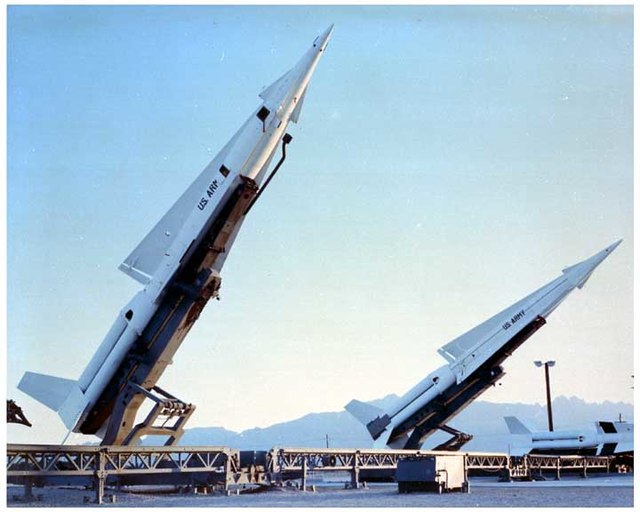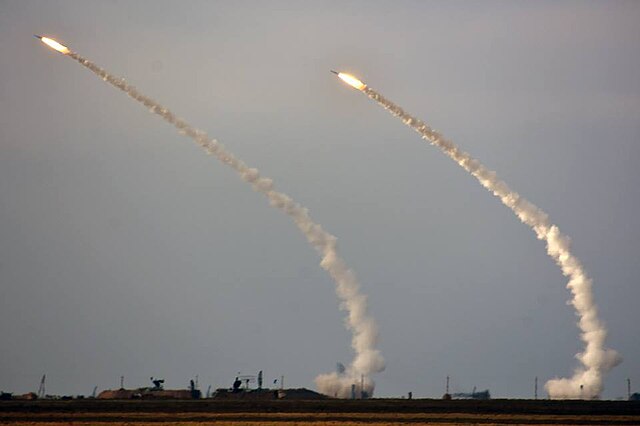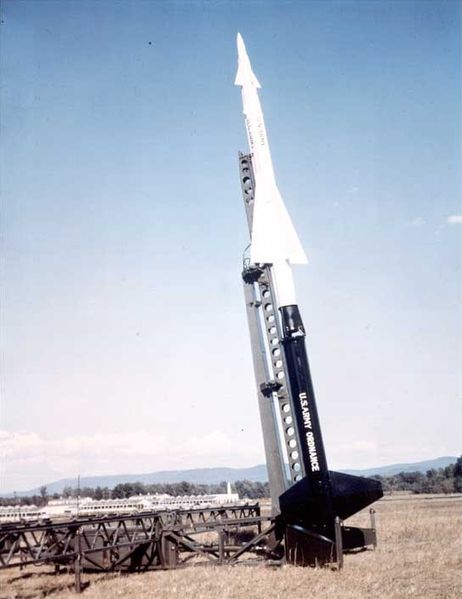The Nike Hercules, initially designated SAM-A-25 and later MIM-14, was a surface-to-air missile (SAM) used by U.S. and NATO armed forces for medium- and high-altitude long-range air defense. It was normally armed with the W31 nuclear warhead, but could also be fitted with a conventional warhead for export use. Its warhead also allowed it to be used in a secondary surface-to-surface role, and the system also demonstrated its ability to hit other short-range missiles in flight.
Nike Hercules missile
This image shows the evolution of the Hercules and its associated launch systems as it replaced Ajax. Note the growth of the fuselage as it moved to solid fuel.
The IFC area of an Improved Nike Hercules site mounts its five radars on platforms for a better view. From left to right are the TTR and TRR, HIPAR (large white dome) LOPAR (small dark rectangle in center foreground) and MTR.
The antennae of the LOPAR radar component (originally, the Ajax detection radar) and IFF interrogator.
A surface-to-air missile (SAM), also known as a ground-to-air missile (GTAM) or surface-to-air guided weapon (SAGW), is a missile designed to be launched from the ground or the sea to destroy aircraft or other missiles. It is one type of anti-aircraft system; in modern armed forces, missiles have replaced most other forms of dedicated anti-aircraft weapons, with anti-aircraft guns pushed into specialized roles.
A pair of S-300 missiles being launched
A Wasserfall missile lifts off during a test flight.
Nike Ajax was the first operational SAM system.
SA-2 Guideline surface-to-air missiles, one of the most widely deployed SAM systems in the world








